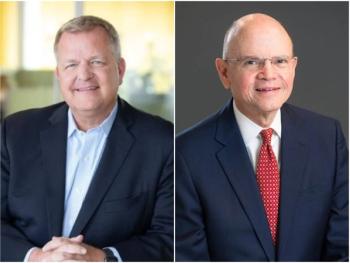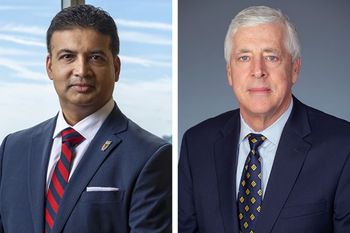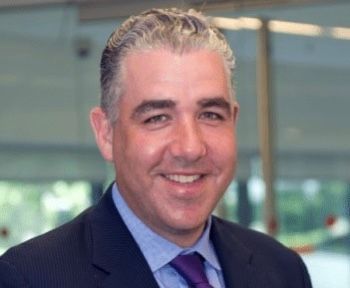
Andy Carter, CEO of The Hospital and Healthsystem Association of Pennsylvania: Focus on what matters | Lessons for Leaders
As he prepares to retire, Carter offers insights on staying focused on key goals, the changing role of healthcare leaders and what has helped him succeed.
Even as he approaches retirement, Andy Carter is still looking ahead.
Carter, who has served as president and CEO of The Hospital and Healthsystem Association of Pennsylvania for more than 10 years, is stepping down June 30. He announced his plans to retire last fall.
He will end his time with the organization just as Pennsylvania’s legislature is scheduled to finish work on its state budget, at the conclusion of the state’s fiscal year. The association is hoping lawmakers approve measures to improve Medicaid payments and support rural hospitals.
“The timing of my retirement is aligned very neatly with my last day being the day we hope we have a state budget that includes a number of hospital priorities,” Carter says.
In an interview with Chief Healthcare Executive®, Carter outlined the key ingredients he sees in successful leadership, the headwinds hospitals and health systems are facing, and the changing role of hospital leaders.
(See part of our conversation with Andy Carter in this video. The story continues below.)
Inspiration from fire departments
Carter has spent many years in leadership roles in healthcare. He served as president and CEO of the Ohio Children’s Hospital Association for nearly six years, and he also spent nearly six years as president and CEO of the Visiting Nurse Associations of America.
He took over as president and CEO of the Hospital and Healthsystem Association of Pennsylvania in December 2012.
- Read more:
RxSense CEO Rick Bates cites the value of knowing ‘when you’ve been wrong’ | Lessons for Leaders
When asked for some key lessons in leadership, Carter stresses the importance of communicating regularly with Pennsylvania’s hospitals and working closely with the association’s staff.
“To me, it all starts with the two most important stakeholders in my work, the member hospitals, and the staff team that delivers on the members' expectations for HAP,” Carter says. “I wake up every day, wondering, ‘How can I help members? What do they need and want to achieve their visions? And how do I deploy an outstanding professional team to get it done?’”
“With that focus, there are things, obviously, that I don't pay as much attention to,” he adds. “For example, I don't spend as much time as some folks in my line of work with policymakers directly. I spend enough, but I don't spend quite as much as I might if I didn't focus so hard on visiting members, spending time with them, interviewing them, listening to them very closely.”
Carter talked about the value of data feedback and continuously reminding the team to stay focused on top priorities.
“Each year, we have what I call here, our top 10 goals, 10 measurable, actionable goals,” he says. “I say to folks, ‘If you're not spending 80% of your time on one or more of these top 10 goals, then you're starting to veer off the plan. So get back on to one of these top 10.’ And that level of focus really helps keep us aligned.”
Carter offers a metaphor of a fire department, which does more than respond to emergencies.
“Obviously, fire departments spend every day putting out both large and small fires, but they're also doing the work to help make sure they have modern infrastructure to fight those fires better,” he says. “They go out and check fire hydrants and all fire control systems and office buildings. So they do have to fight the fires, but they're also looking strategically at public safety.”
Hospital associations should draw inspiration from a fire department and its broader efforts to protect the public.
“We're focused actually, ultimately, on patient safety,” Carter says. “Everything is rolling up into the quality of care that we're providing. And that's our North Star. Are our hospitals well resourced enough to be able to provide high quality care that is measurable and reported to the public? And that makes it relatively easy to remain focused.”
More business strategy
The role of the hospital leader has changed, especially as health systems have expanded into other areas and formed more partnerships, Carter says.
Health system executives have had to become more nimble and willing to try different ventures, including the development of micro hospitals.
“That is a major strategic decision to invest in smaller footprints in more places,” Carter says of micro hospitals in general. “That means hospital leaders are increasingly looking at a vastly bigger ecosystem, not just being the workshop for physicians to come and provide inpatient care, but to be a fully integrated delivery system that meets patients where they are and can provide them the care they seek, with maximum convenience at the lowest possible cost.”
“That just takes a level of business acumen and strategy that 10, 20 years ago was certainly present in the industry, but now it has to be much more common,” Carter says.
Health systems are still facing formidable hurdles, with
“I'd say the light is a bit brighter for many, if not most of the hospitals coming out of the last quarter, but it is still grim,” Carter says. “You know, people are still posting losses. And they're just noting that the losses are not as great as they were a couple of quarters ago.”
Pennsylvania’s hospitals are reporting more success in recruiting and retaining workers, and they’re relying less on staffing agencies to fill positions.
In a rapidly changing healthcare environment with stiff financial difficulties, Carter has hospital leaders must pay attention to their communities and what they want.
“Listen to what your community is asking you to provide,” Carter says. “Keeping that door open to community input, be responsive to those expectations, particularly in historically underserved communities.
“I think hospital leaders are showing incredible courage, by embracing their responsibility for addressing racial inequities in health outcomes,” he adds. “They are doing that because of their careful listening to their communities, and the discovery through their data analytics, that there are disparate outcomes of care.”
Health systems should engage in broad collaboration and dialogues with underserved communities, and be willing to acknowledge mistakes.
“We have a way to go to be the ideal health system that we all want to have in place,” he says. “But we're only going to get there if we're transparent about both our hopes for the future, but transparent about the missteps that happened along the way.”
- Read more:
Health equity ‘can’t be a side hustle’
‘Getting big things started’
As Carter enters his final weeks leading the associaiton, he says he’s pleased to have begun some efforts that should pay dividends in the future. Nicole Stallings, who has been serving as the chief external affairs officer for the Maryland Hospital Association, has been named the next president and CEO of the Hospital and Healthsystem Association of Pennsylvania.
The hospital association has taken efforts to reduce disparities in health outcomes in minority groups. “I'm looking forward to my successor taking that to a place where we can imagine a huge reduction in disparities,” Carter says.
The association has also formed a subsidiary, HAPevolve, offering consulting services to hospitals and health systems.
“I think my legacy is largely about getting big things started,” Carter says. “And I made sure we set the stage for HAP to have the financial strength to allow it to experiment and grow and find new ways to support members and to achieve our advocacy goals, through such things as an increasingly effective effort to recruit lawmakers, and helping get them elected.”
Even after he steps away, Carter says he’s looking forward to seeing how hospitals evolve and find new ways to serve their communities.
“I'm excited to watch as the next decade unfolds, to watch from retirement, as the rate of experimentation and innovation will increase, to be as responsive to some of these growing imperatives to improve healthcare, including healthcare access,” he says.
(If you’d like to submit your lessons in leadership in healthcare, great advice you’ve received, or insights you wish you had earlier, submit an idea for our “Lessons for Leaders” series. Email Ron Southwick, senior editor of Chief Healthcare Executive: [email protected])

















































